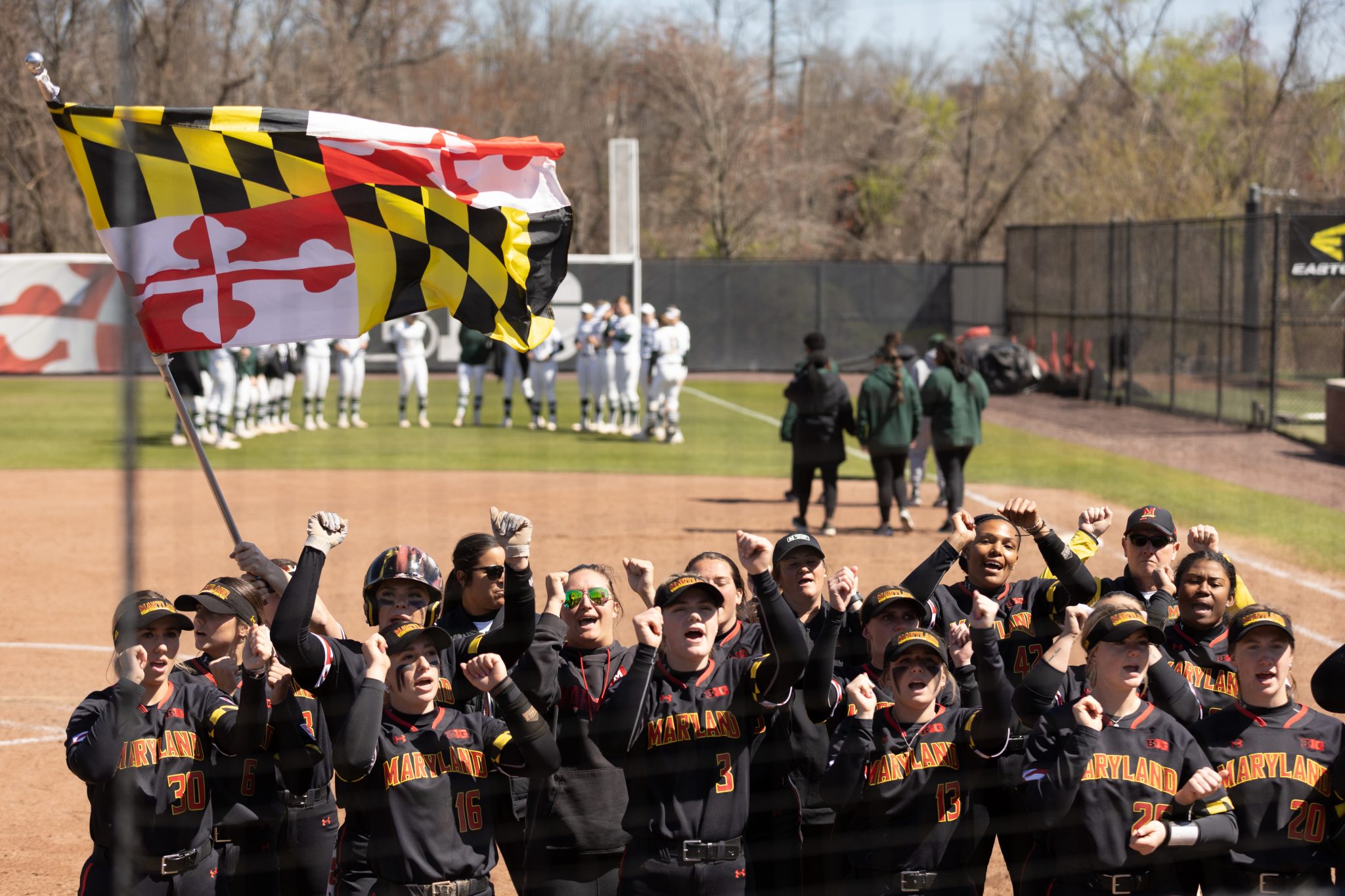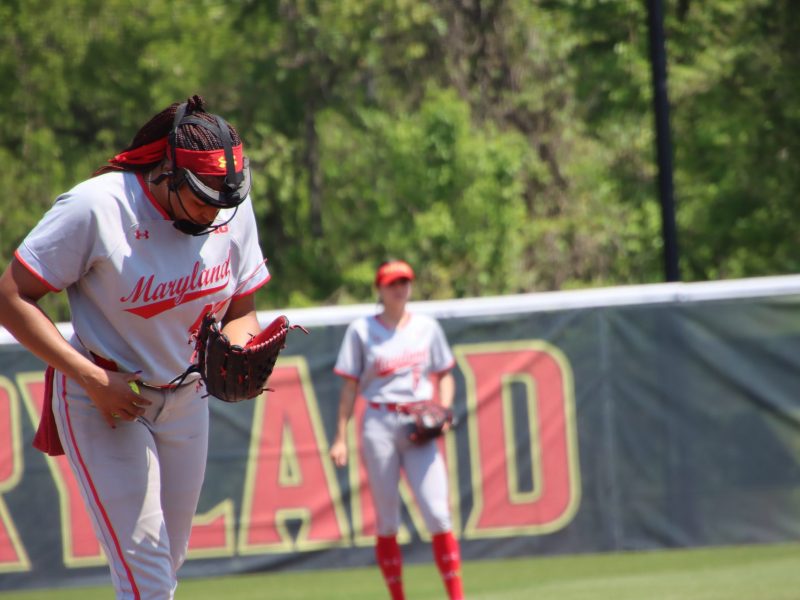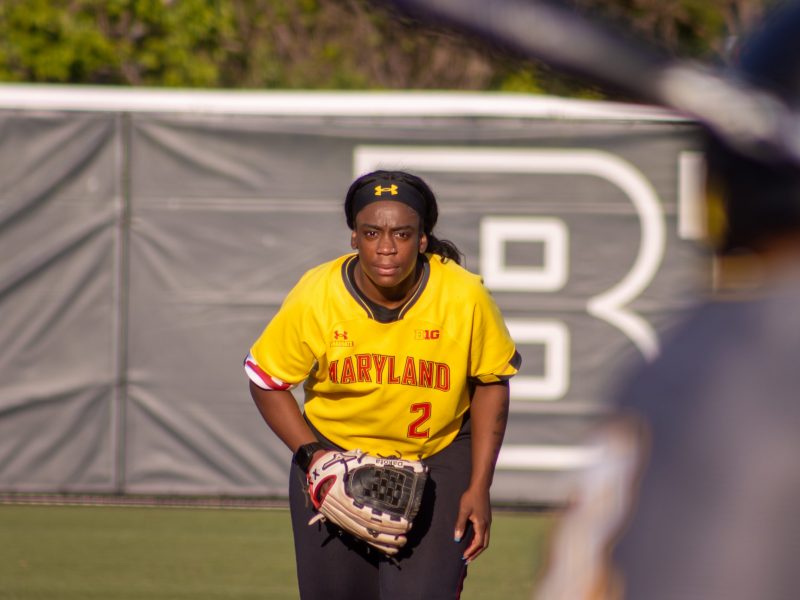Maryland softball is off to its best start in team history. Its resume includes 12 shutouts, an 8-3 home record, 27 victories and a win over then-No. 3 Oklahoma State.
With 15 regular season games left, Maryland’s 27 wins already tie the second most the team has had in the past nine seasons.
Despite losing four of their past five games, the Terps are on an upward trajectory. Coach Mark Montgomery inherited a program that was in the cellar of the Big Ten when he began coaching in 2020.
The Terps won 20 or fewer games six times since 2014. The program was on the heels of a disastrous 20-31 season when Montgomery was hired, only winning four conference games in 2019.
The rebuild has taken time. Maryland has still not reached the upper tier of the Big Ten, but the start to this season has been impressive.
Here are three key factors that have helped the Terps gain the third highest overall win percentage in the Big Ten.
[Maryland softball held scoreless, drops series to Nebraska in 4-0 loss]
Veteran Pitching
Maryland has relied on its two senior pitchers from the onset of the season. Courtney Wyche and Trinity Schlotterbeck have dominated the circle, combining to throw 196.1 innings.
The two have excelled in their senior seasons — each have an ERA under three. Both have taken on a larger role and kept the Terps in games during offensive struggles.
“[The offense] has to do [their] part, because when we get to the fifth or the sixth inning and you’ve given up one run … the game’s harder if we haven’t scored anything to match along with it,” Montgomery said.
Wyche especially has been dominant recently. The senior has only allowed 11 earned runs in her past six outings. She gave up zero runs in three of those contests, including a three hit shutout against Michigan State.
Her fastball has been effective at the top of the zone, and she worked diligently on her offspeed pitches over the offseason. She’s already closing in on her 139 strikeout total from last year with 125 punchouts through 113.2 innings.
In addition to the increased number of strikeouts, the senior ace has also managed to cut her free passes down significantly. It was an issue she struggled with in the past.
“Limiting the walks piece has probably been my biggest improvement over the last two years easily,” Wyche said earlier this season.
Wyche and Schlotterbeck form a pair of starters Montgomery can trust in the circle. The duo has led Maryland to the seventh best combined ERA in the conference, dragging the Terps’ lineup along when they need them most.
Patient approach at the plate
Maryland’s offense has struggled mightily in recent weeks. It’s scored a dismal 1.4 runs per game over the past two series. The Terps were shut out twice by Nebraska, failing to support Wyche in the circle.
This past weekend was a troubling trend for Montgomery as his team deviated from the successful approach they had earlier in the season. Maryland only had nine walks over the three game stretch, leaving Montgomery frustrated with hitter’s approaches at the plate.
“I feel like we need to do a better job of understanding the importance of the at-bat no matter when it is in the course of the game,” Montgomery said.
But while the Terps have struggled recently, the season-long mindset in the batter’s box has paid off. Maryland has a walk rate of 12.4 percent, and the top of the lineup has excelled at extending at bats.
Amelia Lech, Kiley Goff and Megan Mikami all rank in the top five on the team in walks drawn. Lech paces the squad with 23.
“We have aspects in our training that we teach them, what are balls, what we’re looking for, where we’re trying to track them through space,” Montgomery said.
Lengthening at bats and a patient mindset have helped Maryland’s lineup early in the season. It’s paramount the Terps find that again.
[Maryland softball shuts out Nebraska in 2-0 victory]
Weak schedule
Only two of Maryland’s victories were against a ranked opponent, defeating the then-No. 3 Cowboys and then-No.22 Ducks in February.
Maryland touts a 16-1 record against non-power five opponents, its lone loss coming in Mexico against California Baptist. But the Terps are just 4-7 in the Big Ten, showing that the strong nonconference record might be a product of the quality of their early opponents.
That poor conference record comes in spite of the Big Ten only having one team in the top 25 — No. 20 Northwestern. Teams such as Indiana, Iowa and Wisconsin are enjoying successful seasons, but the conference as a whole is not as strong as other leagues.
Defeating nonconference teams can help build confidence, but beating the Big Ten’s best is a must if the Terps want to make the NCAA tournament.
While Maryland has shown the capability to compete against top-tier teams, it has struggled to seal the deal. If the program wants to compete for Big Ten championships, that is the next step it needs to take.
“We are growing this program. We are not where we want to be,” Montgomery said.



